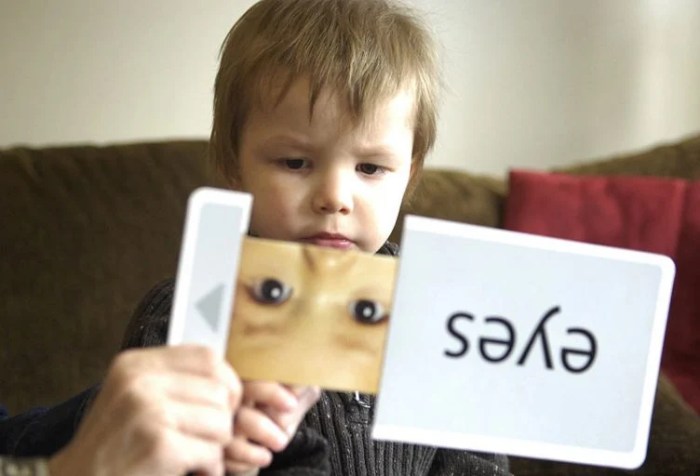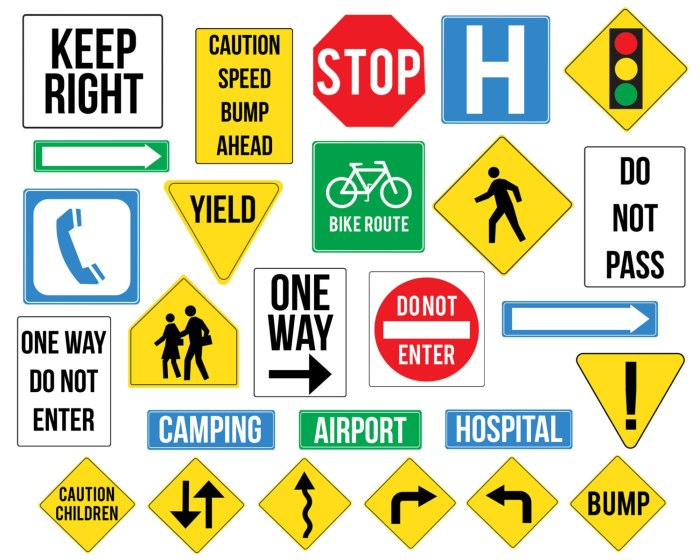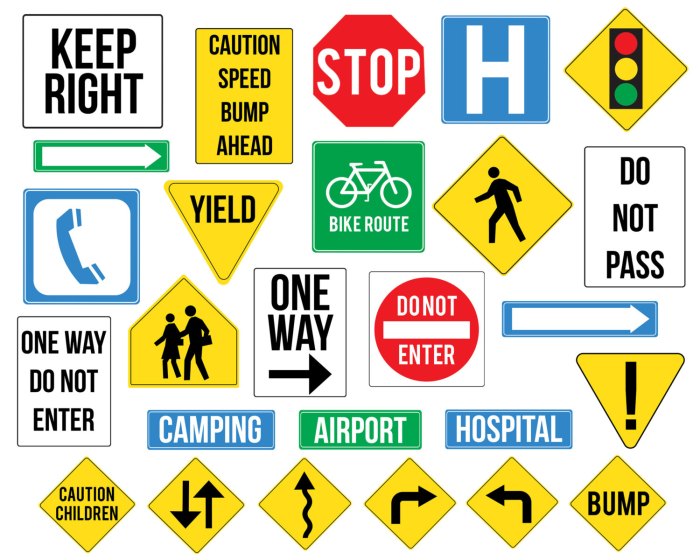Pragmatic speech delays in autism present a unique set of challenges, impacting how individuals with autism communicate and interact with the world. This in-depth look delves into the complexities of these delays, examining their definition, impact, assessment methods, intervention strategies, and the importance of support systems. Understanding these nuances is crucial for fostering effective communication and enabling individuals with autism to thrive in various environments.
We’ll explore the specific characteristics of pragmatic language delays in autism, differentiating them from other speech delays. We’ll also contrast these delays with typical language development, identifying the varied ways they manifest across different communication contexts. A table outlining key components of pragmatic language, complete with examples of typical and delayed behaviors, will further clarify the complexities of this area.
Defining Pragmatic Speech Delays in Autism
Pragmatic language, often overlooked, is the crucial social aspect of communication. It’s not just about knowing the words, but understanding how and when to use them in different situations. This includes knowing social cues, taking turns in conversation, adjusting language to the listener, and understanding nonverbal communication. Children with autism often experience delays in these crucial pragmatic skills, impacting their ability to navigate social interactions effectively.Pragmatic language delays in autism manifest in various ways, impacting a child’s ability to communicate successfully and build meaningful relationships.
These difficulties extend beyond simply saying the right words; they involve a deeper understanding of social nuances, which is often challenging for individuals with autism.
Pragmatic Language Skills Defined
Pragmatic language skills encompass the social and contextual aspects of communication. These skills are essential for effective interaction and understanding social situations. They involve adjusting language use according to the listener and situation, understanding conversational rules, and using nonverbal communication effectively. These skills allow individuals to engage in meaningful and appropriate interactions.
Characteristics of Pragmatic Speech Delays in Autism
Children with autism often exhibit difficulties with the social aspects of language. This includes understanding and responding to social cues, maintaining appropriate eye contact, using nonverbal communication, and taking turns in conversations. They might struggle to interpret sarcasm, humor, or implied meanings, leading to misunderstandings and social isolation. These challenges are not indicative of a lack of intelligence, but rather a different way of processing information.
Differences Between Pragmatic and Other Speech Delays
While pragmatic language delays often coexist with other speech delays, they are distinct. Articulation or phonological delays focus on the production of sounds, while semantic delays concern word meanings. Pragmatic delays, in contrast, are about theuse* of language in social contexts. They are about understanding and responding to social cues rather than the mechanics of speech itself.
Comparison with Typical Language Development
Typical language development involves a gradual acquisition of pragmatic skills. Children learn to adapt their language to different listeners and situations, and develop an understanding of conversational rules. Children with autism, however, may experience significant delays in acquiring these crucial skills, potentially leading to difficulties in social interactions and relationships.
Manifestations Across Communication Contexts
Pragmatic language delays manifest differently across various communication contexts. In group settings, a child might struggle with taking turns, interrupting, or understanding social hierarchies. In one-on-one conversations, they might have difficulty maintaining eye contact, responding appropriately to questions, or understanding the listener’s perspective. These delays affect various aspects of social communication.
Key Components of Pragmatic Language
| Component | Typical Behavior | Delayed Behavior |
|---|---|---|
| Turn-Taking | Takes turns in conversations, listens attentively, waits for pauses | Interrupts frequently, talks over others, struggles to wait their turn |
| Topic Maintenance | Keeps conversations on track, responds to related topics, connects ideas | Struggles to stay on topic, changes topics abruptly, doesn’t relate ideas |
| Social Cues | Recognizes and responds to nonverbal cues (tone, facial expressions, body language), adjusts language appropriately | Misinterprets nonverbal cues, struggles with eye contact, may exhibit unusual behaviors |
| Social Conventions | Follows social rules (appropriate greetings, politeness, taking turns), understands implied meanings | May not follow social rules, struggles with indirect speech or sarcasm, struggles to understand implied meaning |
| Nonverbal Communication | Uses gestures, facial expressions, and body language effectively to communicate | Limited use of nonverbal communication, difficulty with interpreting nonverbal communication |
| Requesting/Responding | Formulates and responds to requests appropriately | Struggles with requests, inappropriate responses, difficulties understanding others’ requests |
This table provides a glimpse into the range of behaviors indicative of pragmatic language delays. Each delay can manifest in a myriad of ways, impacting the child’s ability to effectively navigate social interactions.
Impact and Consequences of Pragmatic Speech Delays: Pragmatic Speech Delays In Autism
Pragmatic language difficulties, a common characteristic of autism, significantly impact various aspects of life. These difficulties often go beyond simple vocabulary or grammar issues; they concern how individuals use language in social contexts. Understanding the consequences of pragmatic speech delays is crucial for providing appropriate support and interventions. Individuals with these delays face unique challenges in navigating social situations, education, and daily life.These challenges can be disheartening, but with appropriate interventions and understanding, individuals with pragmatic speech delays can learn to communicate effectively and build fulfilling relationships.
This exploration will delve into the specific ways these delays manifest in different areas of life.
Impact on Social Interactions
Pragmatic speech delays profoundly affect social interactions. Individuals may struggle with understanding and responding to social cues, such as nonverbal communication, tone of voice, and social context. This can lead to misunderstandings, misinterpretations, and difficulty forming and maintaining relationships. For example, a person might misinterpret a playful jab as a serious insult or fail to recognize sarcasm, causing awkward or strained interactions.
Understanding pragmatic speech delays in autism can be tricky, often overlapping with other conditions. For example, a common symptom that can mimic or exacerbate these delays is dry mouth, which can sometimes be linked to thyroid disease. If you’re noticing difficulties with social communication in someone with autism, exploring potential underlying health issues like thyroid disease dry mouth is important.
This can help narrow down the cause and support appropriate interventions for pragmatic language development.
Challenges in Educational Settings
Educational settings present particular hurdles for individuals with pragmatic speech delays. Participating in classroom discussions, following instructions, and understanding social dynamics in group settings can be exceptionally difficult. Students may struggle to participate appropriately, ask clarifying questions, or understand unspoken rules. This can lead to feelings of isolation, frustration, and academic difficulties. For example, a student might interrupt a teacher mid-sentence or fail to understand the nuances of classroom discussions, impacting their comprehension and ability to contribute constructively.
Difficulties in Maintaining Friendships and Relationships
Building and maintaining friendships and relationships is a significant struggle for many individuals with pragmatic speech delays. They may have difficulty understanding social rules, leading to misunderstandings and conflicts. For instance, they might not recognize when their behavior is inappropriate, or fail to pick up on subtle social cues like when to take a turn in a conversation.
This can result in feelings of rejection, loneliness, and social isolation.
Effects on Daily Life Activities and Independence
Pragmatic speech delays affect daily life activities, impacting independence. Tasks that require social interaction, such as making appointments, ordering food, or navigating public transportation, can be challenging. Individuals may struggle with expressing their needs or understanding instructions, which can impede their independence. For example, a person might struggle to ask for assistance or express their needs clearly in a store, leading to frustration and difficulty completing the transaction.
Potential Impact on Future Opportunities and Career Choices
The impact extends to future opportunities and career choices. Many careers require strong social skills and effective communication. Individuals with pragmatic speech delays may face barriers in securing employment or advancing in their chosen fields. For example, a job requiring collaborative teamwork or client interaction might be challenging if the individual struggles to understand and respond to social cues.
Impact on Various Aspects of Life
| Aspect of Life | Impact of Pragmatic Speech Delays |
|---|---|
| Social Interactions | Misinterpretations, difficulty with nonverbal cues, strained interactions |
| Educational Settings | Challenges with classroom participation, following instructions, understanding social dynamics |
| Friendships & Relationships | Misunderstandings, conflicts, difficulty maintaining relationships, feelings of rejection |
| Daily Life Activities | Difficulty expressing needs, understanding instructions, impaired independence |
| Future Opportunities & Career Choices | Barriers in securing employment, difficulties with teamwork or client interaction |
Assessment and Evaluation Methods

Unraveling the complexities of pragmatic language delays in autistic children requires a multifaceted approach to assessment. A comprehensive evaluation goes beyond simply measuring spoken language. It delves into the nuances of social interaction, communication intent, and the understanding of social cues. Effective assessment methods are crucial for developing individualized interventions and tracking progress.
Standardized Assessments
Standardized assessments offer a valuable starting point in evaluating pragmatic language skills. These tools provide norms and benchmarks against which a child’s performance can be compared. Using standardized assessments allows clinicians to identify areas of strength and weakness in a child’s communication abilities. For instance, the Pragmatic Language Scales (PLS-5) or the Social Communication Questionnaire (SCQ) are frequently used for their structured nature and reliable data collection.
This data is essential for creating a baseline for intervention.
Observational Methods
Observational methods are vital for understanding a child’s communication in natural settings. These methods provide insights into how a child interacts socially and communicates with others. Naturalistic observations can be conducted in various settings, such as the classroom, home, or playdates. A key aspect of these observations is the careful documentation of specific communicative behaviors, such as turn-taking, topic maintenance, and the use of nonverbal cues.
For instance, a clinician might observe how a child responds to questions, initiates conversations, or reacts to social cues in a play-based setting.
Gathering Information from Parents and Caregivers
Incorporating parent and caregiver input is crucial for a holistic understanding of a child’s communication skills. Parents and caregivers are often the most familiar with a child’s communication patterns and their strengths and weaknesses. Questionnaires and interviews can be employed to gather detailed information about the child’s communication abilities in different contexts. Furthermore, open-ended questions allow for the gathering of valuable anecdotal information.
For example, a parent might describe how a child typically initiates interactions or responds to requests in everyday routines. This feedback provides invaluable context to the observed behaviors.
Designing an Individualized Assessment Plan
Developing an individualized assessment plan is critical for tailoring the evaluation process to the specific needs of each child. The plan should consider the child’s age, developmental stage, and specific communication challenges. The plan should also account for the child’s individual learning style and preferences. For example, a child who prefers visual supports might benefit from using visual schedules and prompts during the assessment.
The assessment plan should clearly define the goals, methods, and timelines for data collection.
Comparing and Contrasting Assessment Tools
| Assessment Tool | Strengths | Limitations |
|---|---|---|
| Pragmatic Language Scales (PLS-5) | Standardized, comprehensive, and widely used. Provides detailed profiles of pragmatic skills. | Can be time-consuming to administer. May not capture the full range of a child’s communication abilities in diverse contexts. |
| Social Communication Questionnaire (SCQ) | Efficient screening tool for identifying potential social communication difficulties. Relatively quick to administer. | Not as detailed as PLS-5. Might miss subtle pragmatic difficulties. |
| Naturalistic Observations | Provides rich insights into communication in real-life settings. Offers opportunities to understand the child’s communicative intent and social interactions. | Subjective, requiring careful documentation and interpretation by trained professionals. Time-consuming to conduct and analyze. |
This table offers a preliminary comparison of commonly used assessment tools. Clinicians should consider the specific needs of each child when selecting the most appropriate assessment tools.
Intervention Strategies and Approaches

Supporting pragmatic language development in autistic individuals requires a multifaceted approach tailored to individual needs. Effective interventions focus on building foundational skills, like joint attention and turn-taking, and gradually progressing to more complex social communication interactions. These strategies aim to enhance understanding and use of social cues, non-verbal communication, and appropriate conversational skills. A key aspect is creating a supportive and encouraging environment where the individual feels comfortable practicing and refining these skills.
Effective Intervention Strategies
Various evidence-based intervention strategies prove effective in addressing pragmatic language delays. These strategies often combine different approaches, adapting to the individual’s learning style and specific challenges. Key strategies include:
- Social Skills Training: This structured approach teaches specific social skills, such as initiating conversations, maintaining eye contact, and responding appropriately to different social situations. Role-playing and modeling are crucial components, providing opportunities for practicing skills in a safe environment. For example, a session might involve role-playing ordering food at a restaurant, focusing on turn-taking, requesting clarification, and expressing needs.
- PECS (Picture Exchange Communication System): This visual communication system is particularly beneficial for individuals who may have difficulty expressing themselves verbally. It uses visual supports to facilitate communication, encouraging the exchange of pictures or symbols to convey needs and wants. A structured sequence of actions can be taught, like choosing a picture to request an item, then exchanging it for the desired object.
This helps develop the understanding of communication as an exchange.
- ABA (Applied Behavior Analysis): ABA interventions utilize principles of learning and reinforcement to teach communication and social skills. This involves breaking down complex skills into smaller, manageable steps and reinforcing desired behaviors. For instance, teaching a child to ask for a drink can be broken into separate steps, such as pointing to the drink, then saying “drink”, and finally asking for the drink using full sentences.
- Speech Therapy: Speech therapists are crucial in providing targeted support for articulation, vocabulary, and pragmatic language development. They often incorporate techniques to improve verbal expression, and to help the individual understand and respond to various social cues. This could include activities to identify emotions in facial expressions or tone of voice.
Approaches to Supporting Communication Development
Different approaches support communication development in autistic individuals, with a focus on creating a personalized plan that addresses individual needs. These approaches involve tailoring methods and materials to the specific challenges and strengths of each individual.
- Individualized Plans: Interventions are most effective when tailored to the specific needs and strengths of the individual. This means evaluating the individual’s current communication skills, identifying areas for improvement, and creating a personalized plan that addresses these needs. It’s essential to consider factors like learning style, sensory sensitivities, and preferred communication modalities.
- Sensory Considerations: Autistic individuals may have varying sensory sensitivities. Interventions should take into account these sensitivities to create a comfortable and supportive learning environment. This includes adapting activities to minimize sensory overload or providing opportunities for sensory regulation breaks.
- Visual Supports: Visual aids, like schedules, social stories, and visual representations of instructions, can significantly support communication and understanding for individuals with pragmatic language delays. These visual cues can reduce anxiety and increase predictability in various situations.
Structured and Unstructured Activities
Structured activities provide a clear framework for learning and practicing pragmatic skills. Unstructured activities encourage natural interaction and spontaneous communication. Both are essential for fostering development.
- Structured Activities: These include role-playing scenarios, social stories, and games that target specific pragmatic skills. For instance, a structured activity could be role-playing a visit to a doctor’s office, focusing on turn-taking, asking questions, and following instructions.
- Unstructured Activities: These activities are more flexible and open-ended, such as free play with peers or engaging in shared activities. These opportunities allow for natural interaction and development of pragmatic skills in everyday situations. This can involve playing board games, engaging in group activities, or having unstructured conversations.
Sample Lesson Plan
This is a sample lesson plan for a pragmatic language intervention session:
- Objective: To improve the student’s ability to initiate and maintain conversations.
- Materials: Cards with different scenarios (e.g., at a park, at a restaurant).
- Procedure:
- Review previous learning and discuss the importance of eye contact and turn-taking.
- Present scenarios (e.g., “You are at a park, what can you say to a child you meet?”).
- Model appropriate responses to each scenario using clear and concise language.
- Have the student role-play each scenario, providing positive reinforcement and feedback.
- Conclude with a review of the key skills practiced in the session.
Role of Parents and Caregivers
Parents and caregivers play a vital role in supporting pragmatic language development. Their consistent engagement and implementation of strategies at home significantly contribute to progress.
- Consistent Application: Parents and caregivers should consistently apply the learned strategies at home to reinforce the skills taught in therapy sessions.
- Creating a Supportive Environment: A supportive and encouraging environment at home is crucial for the child to feel comfortable practicing and refining their pragmatic skills.
- Collaboration with Therapists: Parents should actively collaborate with therapists to understand the specific needs of the child and implement strategies effectively.
Intervention Approaches
| Intervention Approach | Strengths | Limitations |
|---|---|---|
| Social Skills Training | Provides a structured framework for learning specific social skills. | May not be engaging for all individuals. Requires significant therapist time. |
| PECS | Effective for individuals with limited verbal communication. | Requires specialized training and materials. May not be suitable for all communication needs. |
| ABA | Focuses on reinforcement and skill acquisition. | Can be intensive and time-consuming. Requires specialized training. |
| Speech Therapy | Targets specific language skills. | May not address all social communication aspects. |
Supporting Communication Development in Diverse Settings
Helping children with pragmatic speech delays in autism thrive requires understanding and adapting communication strategies across various environments. Successful communication is not just about the words spoken, but also about the context, the listener, and the overall social situation. This involves careful planning and implementation of support systems that consider the unique needs of each child.Communication development isn’t confined to a single setting; it’s a continuous process that unfolds in homes, schools, and communities.
Children with pragmatic speech delays benefit greatly from consistent approaches and strategies across these environments, fostering a more cohesive and supportive communication experience. This approach promotes generalization of learned skills and allows for continued progress in their communication journey.
Strategies for Promoting Pragmatic Language Skills at Home
Effective communication strategies at home build a foundation for success in other settings. Consistency in communication styles and expectations is key. For example, clear instructions, visual aids, and predictable routines can significantly improve understanding and reduce frustration. Positive reinforcement for attempts at communication, even if not fully successful, motivates the child to continue trying.
- Creating a Predictable Routine: Establish consistent daily schedules and routines to reduce uncertainty and promote predictability. This can include visual schedules, which are especially helpful for children who process information visually. Visual aids, such as picture cards, can represent daily activities, making the routine more accessible and understandable.
- Using Visual Supports: Picture cards, social stories, and visual schedules can enhance communication and understanding in various contexts. These tools provide a visual representation of the expected communication and social interactions.
- Modeling Appropriate Communication: Parents and siblings can model appropriate social interactions and communication skills through clear and concise language, demonstrating turn-taking, and active listening.
- Encouraging Participation in Conversations: Engage the child in conversations, asking open-ended questions and providing opportunities for responses. Positive feedback and encouragement for participation, even with slight delays or errors, is crucial.
Modifying Communication Tasks for School
Adapting communication tasks in the school environment is vital for successful participation in classroom activities. Teachers can modify assignments and expectations to accommodate diverse communication styles. For instance, allowing alternative communication methods, like using a communication board or assistive technology, can empower the child and increase their engagement.
- Using Assistive Technology: Implementing assistive technology, like speech-generating devices or communication boards, can support the child’s communication needs during classroom activities.
- Providing Visual Supports: Visual schedules, task breakdowns, and social stories can help the child understand and anticipate classroom routines and expectations.
- Modifying Assignments and Expectations: Consider alternative formats for assignments, allowing for verbal, written, or visual responses based on the child’s strengths.
- Collaborating with Special Education Teams: Close collaboration with special education teams is crucial for developing individualized education programs (IEPs) that address the child’s unique communication needs.
Importance of Social Skills Training
Social skills training is an integral component of intervention programs. It equips children with the tools and strategies necessary for navigating social situations effectively. Training sessions can focus on recognizing and responding to social cues, understanding different perspectives, and initiating and maintaining interactions.
Pragmatic speech delays in autism can be tricky, impacting how kids interact and communicate. Sometimes, these challenges are linked to other underlying issues, like Irritable Bowel Syndrome (IBS). If you’re looking for more information on how medications like Bentyl can help manage IBS symptoms, check out this helpful overview: bentyl for ibs an overview. Ultimately, understanding these connections can help us better support children with autism and their families.
- Role-Playing Scenarios: Engage in role-playing activities that simulate real-life social interactions, providing opportunities for practice and feedback. This allows children to rehearse different social situations and receive constructive feedback on their responses.
- Teaching Social Rules and Expectations: Explicitly teach social rules and expectations within different contexts, ensuring that the child understands the social norms in each situation.
- Providing Opportunities for Social Interactions: Provide structured opportunities for social interactions with peers, both in small groups and in larger settings.
Adapting Communication Strategies
Recognizing and adapting to the specific communication styles and needs of children with autism is crucial. For instance, some children may communicate more effectively through nonverbal cues or prefer visual aids. Tailoring interventions to these individual differences is key to fostering effective communication.
- Utilizing Nonverbal Communication: Recognize and utilize nonverbal communication cues, such as gestures, facial expressions, and body language, to enhance communication.
- Prioritizing Visual Supports: Incorporate visual supports and strategies to facilitate understanding and participation in different activities and settings.
- Considering Sensory Needs: Be mindful of sensory sensitivities and needs when designing communication activities and environments. Adjusting the environment or activity to accommodate these needs can positively impact communication outcomes.
Role of Communication Partners
Communication partners, including parents, teachers, and other caregivers, play a vital role in supporting communication development. They are essential in creating a supportive and understanding environment. Consistent communication approaches and strategies between home and school foster consistency and facilitate progress.
- Open Communication Channels: Establish open communication channels between home and school to ensure that everyone is on the same page regarding communication strategies.
- Collaborative Support Systems: Foster a collaborative support system involving parents, teachers, therapists, and other professionals to provide consistent and comprehensive support.
- Active Listening and Validation: Model active listening and validate the child’s communication attempts, even if they are not fully understood.
Best Practices for Adapting Communication Tasks Across Settings, Pragmatic speech delays in autism
| Setting | Best Practices |
|---|---|
| Home | Consistent routines, visual supports, modeling appropriate communication, and opportunities for participation in conversations. |
| School | Assistive technology, visual supports, modified assignments, and collaboration with special education teams. |
| Community | Structured activities, clear communication about expectations, and opportunities for practice in various social situations. |
Resources and Support Systems
Navigating the complexities of autism, especially when pragmatic speech delays are involved, can feel overwhelming for families and professionals. Fortunately, numerous resources and support systems are available to provide guidance, support, and practical strategies. This section details vital organizations, professional collaborations, and helpful online materials that can greatly assist those working with children facing these challenges.Understanding the importance of a comprehensive support network is crucial.
Collaboration among professionals, including speech-language pathologists, educators, and psychologists, is essential to ensure a holistic approach to intervention and to maximize positive outcomes for children with pragmatic speech delays. Shared knowledge and consistent communication are vital components of this collaborative effort.
Available Resources for Families
Families seeking support for children with autism and pragmatic speech delays benefit from access to a wide range of resources. These resources can provide valuable information, practical strategies, and opportunities for connection with others facing similar challenges.
- Autism Speaks: A leading national organization dedicated to autism research and advocacy, Autism Speaks offers a wealth of information, support groups, and resources for families and professionals. They provide educational materials, research updates, and connect families with local support networks.
- The National Autistic Society (UK): This UK-based organization provides extensive resources, including information about pragmatic language difficulties in autism, support groups, and practical guidance for families. They also offer advice on accessing specialist services and support.
- Local Parent Support Groups: Connecting with local parent support groups offers a valuable opportunity to share experiences, exchange strategies, and receive practical advice from other families. These groups can provide emotional support and a sense of community, essential for navigating the challenges of raising a child with autism.
Professional Organizations and Networks
Collaborations among professionals are essential for effective intervention and support.
- The American Speech-Language-Hearing Association (ASHA): ASHA provides resources, training, and networking opportunities for speech-language pathologists (SLPs) specializing in autism. They offer evidence-based information and support for SLPs working with children with pragmatic speech delays.
- The Council for Exceptional Children (CEC): This organization provides resources and support for educators working with students with disabilities, including those with autism. They offer professional development opportunities, articles, and resources related to effective teaching practices for children with pragmatic language difficulties.
- Psychology organizations: Various psychology organizations, including state-level and national associations, offer professional development and resources for psychologists working with autistic children. These organizations frequently publish research articles and provide opportunities for professionals to network and share best practices.
Helpful Websites, Books, and Articles
Accessing relevant online resources, books, and articles can significantly enhance understanding and practical application of knowledge about pragmatic speech delays in autism.
- Websites like Understanding Autism: Numerous websites provide detailed information, including articles, videos, and practical tips about supporting communication development in children with autism and pragmatic language delays.
- Books by experts: Books by recognized experts in the field offer in-depth analyses and practical strategies for supporting children with autism, specifically focusing on pragmatic language. These resources offer valuable insights and strategies for families and professionals.
- Research articles and journals: Staying updated with the latest research through professional journals and articles allows professionals to adapt their interventions to align with the most current findings.
Collaboration Among Professionals
A collaborative approach involving speech-language pathologists, educators, and psychologists is vital for optimal outcomes.
Understanding pragmatic speech delays in autism can be tricky, sometimes feeling like a puzzle with missing pieces. It’s about more than just the words a child says, but how they use language in different social situations. Sometimes, it’s like trying to figure out if you have a broken bone – do I have a broken bone ?
You need to consider the context and how it affects the child’s communication, just like a doctor needs to examine the situation. This is similar to how we assess pragmatic speech delays; it’s not just about the words, but about the overall communication pattern.
- Interdisciplinary teams: Establishing interdisciplinary teams that bring together diverse professionals ensures a comprehensive understanding of the child’s needs and the development of a cohesive intervention plan.
- Communication and collaboration: Regular communication and collaboration among professionals are essential for coordinating interventions, sharing information, and ensuring consistent support for the child.
Table of Available Resources
| Organization | Contact Information | Service Areas |
|---|---|---|
| Autism Speaks | (800) 929-4663 | National |
| The National Autistic Society (UK) | [Contact Information] | United Kingdom |
| ASHA | [Contact Information] | National |
| CEC | [Contact Information] | National |
Illustrative Case Studies
Understanding pragmatic language delays in autism requires looking at real-life examples. Case studies provide valuable insights into the specific challenges children face, the interventions that work, and the positive outcomes achieved. They highlight the importance of tailoring interventions to the unique needs of each child. By examining individual experiences, we gain a deeper understanding of the complexities of autism and pragmatic language development.
Case Study 1: Liam’s Journey
Liam, a 5-year-old with autism, presented with significant pragmatic speech delays. He struggled with maintaining conversations, taking turns, and understanding non-verbal cues. He often interrupted others, spoke excessively about his interests, and found it difficult to adapt his language to different social situations. His speech was often repetitive and lacked flexibility.
- Assessment Results: Liam’s assessment revealed a significant gap between his receptive and expressive language skills. He understood many words and phrases, but struggled to use them appropriately in conversation. He exhibited difficulty with social interaction, turn-taking, and following social rules. His scores on standardized pragmatic language tests were below average.
- Intervention Plan: A comprehensive intervention plan was developed, focusing on social skills training, joint attention activities, and structured communication exercises. The plan emphasized building Liam’s awareness of social cues, practicing turn-taking in games, and modeling appropriate conversation techniques. Visual supports, such as social stories and visual schedules, were also incorporated to aid his understanding and predictability. Emphasis was placed on direct instruction and positive reinforcement.
- Progress Report: Over the course of six months, Liam showed remarkable progress. He became more comfortable initiating and maintaining conversations. He started to understand and respond to non-verbal cues more effectively. His use of appropriate language increased significantly, and he demonstrated improved turn-taking skills. Liam became more engaged in social interactions and exhibited fewer instances of interrupting others.
His overall communication skills improved, enabling him to participate more actively in social settings. The visual supports were crucial in helping him navigate social situations. Parents and educators were taught strategies to reinforce these gains.
Case Study 2: Sofia’s Communication Challenges
Sofia, a 7-year-old with autism, faced difficulties with social communication and understanding social contexts. She struggled to interpret nonverbal cues, often misinterpreted the meaning of others’ words and actions, and had trouble adjusting her communication style for different social settings. She had difficulty making friends.
- Assessment Results: Sofia’s assessment highlighted her difficulty with pragmatic language, including difficulties with implied meanings, humor, and sarcasm. She often interpreted situations literally and struggled to understand the social context behind communication. She also exhibited challenges with initiating and maintaining conversations. Her scores on pragmatic language tests were significantly below average.
- Intervention Plan: A tailored intervention plan was implemented to address Sofia’s specific needs. This included a focus on building social understanding through role-playing scenarios, using visual supports to clarify social situations, and providing explicit instruction on interpreting non-verbal cues. The plan incorporated peer interaction opportunities, where she could practice social skills in a supportive environment. Emphasis was placed on building her confidence and developing her ability to understand social situations.
- Progress Report: Sofia’s progress was gradual but consistent. She demonstrated a better understanding of non-verbal cues and adjusted her communication style accordingly. Her ability to initiate and maintain conversations improved significantly. She also displayed increased social interaction skills, participating in group activities and showing increased interest in peer interactions. Sofia’s improved understanding of social situations helped her make friends.
Her progress demonstrates the importance of individualized interventions and consistent support.
Closing Summary
In conclusion, pragmatic speech delays in autism are multifaceted challenges requiring comprehensive understanding and tailored support. From assessment and intervention strategies to the crucial role of resources and support systems, this discussion highlights the multifaceted approach needed to empower individuals with autism and enhance their communication abilities. By recognizing the specific challenges and applying effective strategies, we can create a more inclusive and supportive environment for individuals with autism to thrive and achieve their full potential.







